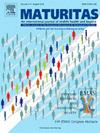餐桌上添加的盐,APOE基因型和痴呆的发生。
IF 3.9
2区 医学
Q2 GERIATRICS & GERONTOLOGY
引用次数: 0
摘要
背景:在西方国家,餐桌上(即在食物准备好后,在食用过程中)添加盐的频率可以反映一个人的长期饮食偏好和习惯摄入量。然而,人们对餐桌上加盐的频率与痴呆症发病率之间的关系知之甚少。本研究调查了餐桌上加盐的频率与痴呆风险的关系,并探讨了载脂蛋白ε4基因型人群之间的关系差异。方法:个人表明他们是否在餐桌上添加盐(用于烹饪的盐不包括在内)“never/rarely”, “sometimes”, “usually”或“always”。Cox比例风险模型用于计算95%置信区间的风险比,并评估餐桌上添加盐的频率与痴呆发生率之间的关系。结果:我们观察到在餐桌上加盐的频率与现场尿钠浓度和估计的24小时钠排泄之间呈分级关系。在中位13.7年的随访中,有9373例全因痴呆,包括4119例阿尔茨海默病和2052例血管性痴呆。在调整潜在的混杂因素后,随着餐桌上盐添加频率的增加,全因痴呆、阿尔茨海默病和血管性痴呆的风险呈单调增加趋势(均为p趋势)。结论:我们的研究表明,餐桌上盐添加频率越高,痴呆发生的风险越高。载脂蛋白E ε4杂合子和纯合子个体间的正相关关系更为显著。本文章由计算机程序翻译,如有差异,请以英文原文为准。
Salt added at the table, APOE genotype and incident dementia
Background
The frequency of salt added at the table (i.e., to food after it has been prepared, during consumption) could reflect an individual's long-term dietary preference and habitual intake in Western countries. However, little is known about the association between the frequency of salt added at the table and incident dementia. This study investigates the association of the frequency of salt added at the table with the risk of dementia and explores differences in the associations among people with apolipoprotein E ε4 genotypes.
Methods
Individuals indicated whether they added salt to their food at the table (salt used for cooking was not included) “never/rarely”, “sometimes”, “usually”, or “always”. Cox proportional hazards models were used to compute hazard ratios with 95 % confidence intervals and evaluate the association between the frequency of salt added at the table and incident dementia.
Results
We observed a graded relation between the frequency of salt added at the table and spot urine sodium concentrations and estimated 24-h sodium excretion. Over a median follow-up of 13.7 years, there were 9373 cases of all-cause dementia, including 4119 of Alzheimer's disease and 2052 of vascular dementia. With a higher frequency of salt added at the table, the risk of all-cause dementia, Alzheimer's disease and vascular dementia increased in a monotonic manner after adjustment for potential confounding factors (all P-trend <0.001). These associations of the frequency of salt added at the table with the risks of all-cause dementia, Alzheimer's disease and vascular dementia were greater in apolipoprotein E ε4 heterozygotes and homozygotes.
Conclusion
Our study showed that a higher frequency of salt added at the table was associated with a higher risk of incident dementia. This positive association was more prominent among individuals with apolipoprotein E ε4 heterozygotes and homozygotes.
求助全文
通过发布文献求助,成功后即可免费获取论文全文。
去求助
来源期刊

Maturitas
医学-妇产科学
CiteScore
9.10
自引率
2.00%
发文量
142
审稿时长
40 days
期刊介绍:
Maturitas is an international multidisciplinary peer reviewed scientific journal of midlife health and beyond publishing original research, reviews, consensus statements and guidelines, and mini-reviews. The journal provides a forum for all aspects of postreproductive health in both genders ranging from basic science to health and social care.
Topic areas include:• Aging• Alternative and Complementary medicines• Arthritis and Bone Health• Cancer• Cardiovascular Health• Cognitive and Physical Functioning• Epidemiology, health and social care• Gynecology/ Reproductive Endocrinology• Nutrition/ Obesity Diabetes/ Metabolic Syndrome• Menopause, Ovarian Aging• Mental Health• Pharmacology• Sexuality• Quality of Life
 求助内容:
求助内容: 应助结果提醒方式:
应助结果提醒方式:


